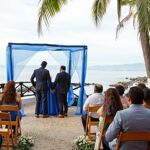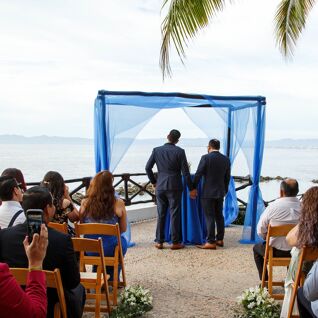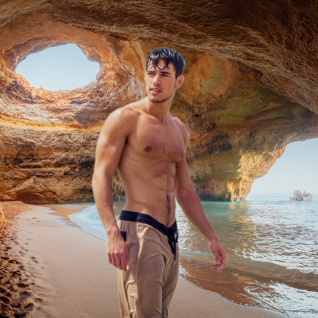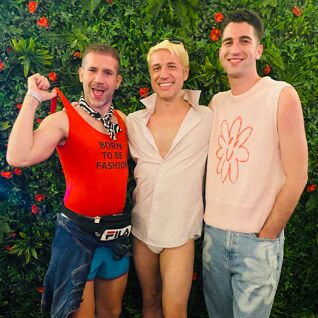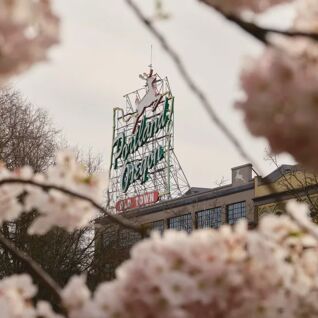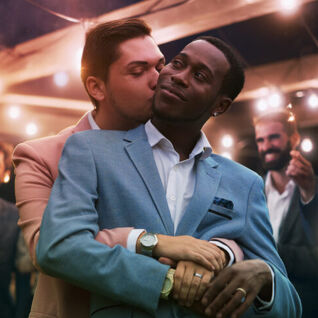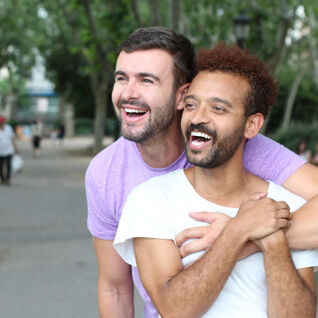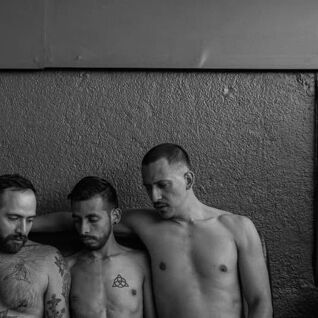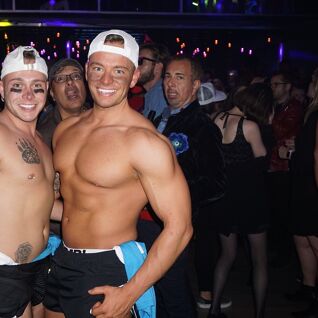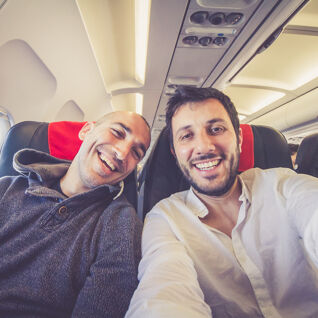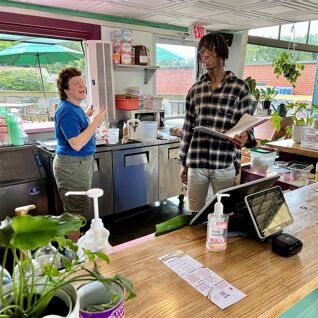
Colombia is ready to welcome you.
The government had taken the step of inviting GayCities to attend the first official gathering of LGBTQ journalists to tour the nation as proof of the country’s turn town liberal values, that a spate of liberal legislation had really made a difference. Colombians already enjoyed marriage equality as well as hate crime laws and gender identity protections, but I was curious about how it played out on the ground, for a visitor.
Bogota, it turned out, resembled New York City or Toronto or even Mexico City. Skyscrapers dotted the horizon just outside of the clean, modern airport which I found much easier to navigate than the airports of said cities. Much to my delight, I also saw men walking down the street holding hands. With a population of about 10 million people, Bogota had its own Gayborhood: Chapinero. And much like Hell’s Kitchen or West Hollywood or the Castro, LGBTQ folk helped make Chapinero a center of style and culture.
The first night of our city tour, Colombia had arranged for me to have a special highlights tour of some of the city’s best gay bars & discos. The Queer Scouts, as they called themselves, arrived in a van complete with Pride anthems, Vodka, and an unshorn (and untucked) drag queen. The very gay bunch drove me across town to Brokeback Mountain, our first stop on the tour. Yes, named for the classic film, the venue had a vibe that mixed hole-in-the-wall with trendy, as Warhol-style paintings of Heath Ledger and Jake Gyllenhaal lined the wall. Patrons sipped beer and chatted with friends as they waited for their turn to sing some karaoke.
Garage Disco, our next stop, felt chic. The club played more American and British pop, and tended to attract a younger 20-something crowd with it’s, garage-like design and inexpensive drink specials. I managed to spend a few minutes on the dance floor for what proved to be a warm-up for our next destination: the world-famous nightclub Theatron.

I’d visited my share of wild parties all over the world, and seen some pretty amazing crowds. Yet even the wildest nights of the White Party paled in comparison to the scene at Theatron. The club occupied an entire city block and still managed to have an entry line wrapped around the full perimeter of the building twice. The night I’d arrived, although still early in November, happened to coincide with Theatron’s Halloween party. Believe it or not, Colombians make Halloween into an even bigger party than Americans, with festivities running from October 31 through the first full week of November. Theatron attracted some of the most elaborate and sexy costumes I’d ever seen. The eye candy alone would have been worth the price of admission.

Fortunately, the rest of Theatron didn’t disappoint, either. About 4,000 people had shown up for the party, and I didn’t have to ask why. Theatron’s entry fee includes an open bar. Each visitor receives a cup when entering which bartenders will happily fill at any of the club’s many watering spots. Even better, Theatron offers 13 different dance floors, each with a theme, and with a different style of music.
The outdoor “village” bar is where men and women grind to the sound of pop and hip-hop. The “rock” bar features a mix of danceable classic and alternative rock tunes in a saloon-type room with booths and pool tables. A room decorated like a French brothel blasted house music while club-goers sipped drinks in fancy chairs, each adorned with an icon of a pop diva. High on the roof, ripped gogo dancers danced on illuminated boxes in a glass wraparound bar that looked out over the city. The club even had a sex shop tucked on one floor, just in case I needed a harness or some sexy undies to change into. Needless to say, I had plenty to do, and plenty of men to flirt with.
I could have stayed at Theatron all night, though with jet lag creeping up on me and an early call the next day, I eventually retired to bed. The next day found me wandering the aisles of the Usaquen Flea Market just outside the Santa Clara Monastery. The vendors there featured a fine variety of food and crafts made by local artisans. My eyes darted right away to the jewelers selling high-quality leather and silver bracelets. Even for visitors who didn’t want to shop—few vendors accept American dollars—street performers and artists also wandered the area, drawing elaborate chalk drawings or performing mime work for tips.
After a visit to Usaquen, my guide took me for some salsa lessons. Seldom have my hips moved so much thanks to a pair of very good looking dance instructors. Even though the two didn’t speak English, they gave understandable instruction that had me huffing and puffing as I used muscles I’d forgotten I even had.

Then the instructors showed off their real talent. Over a traditional Colombian dinner, the two joined an all-male salsa dance revue centered around gender fluidity. The boys donned heels for the show for some of the most athletic dance I’ve seen, complete with lifts, dips and scantily-clad grinding. Let’s just say I found the whole dinner experience quite delicious.
Because of the mountainous terrain, long-distance travel doesn’t lend itself to driving. Thus, the next morning found me returning to the airport bound for the next city on my tour: Cartagena. The transfer also meant an upgrade in weather; though springtime in Bogota, the temperature hovered in the mid-60s at its warmest, and rain showers often peppered the day. Cartagena, located on the Gulf of Mexico, had the kind of hot & humid tropical climate that made it perfect for strolling in shorts and getting a bit of a tan. The city also had a much different cultural flavor than Bogota, more akin to that of Caribbean islands like Aruba or Jamaica.

One of the oldest cities in the Western Hemisphere, Cartagena had once served as a major port for the Spanish Empire, a history still reflected in the modern city. The remnants of the Spanish settlement, known as the “Walled City,” still exist at the heart of the now-bustling metropolis, which also serves as the center of cultural life. A few gay bars, including the notorious Bourbon Street, now occupy the ancient buildings within the coral city walls, as do a number of designer clothing boutiques and shops selling one of the nation’s chief imports: emeralds.
As a port city, Cartagena tends to attract international tourists from all over the world via cruise ships. Boating, therefore, is a must when visiting. I donned my white linens and headed out to the marina to explore the tiny islands that just sit off the shore. We set off for the Islas San Pedro de Majagua, one of the jungle islands about an hour off the coast.
There on the island, I discovered one of the most remarkable hotels I’ve ever seen. The Hotel Las Islas seemed like something out of Jurassic Park. Arriving by boat, I discovered a hotel literally built into the jungle trees. Open-air wooden paths connect the various complexes on the property which overlooks the white sands of the beach. Even more impressive, each room offers comfort for two guests in an actual treehouse bungalow outfitted with every conceivable modern convenience. I’d never seen anything like it, nor did I expect the beauty of the rooftop bar and private beach to impress me so. And despite the rustic veneer of the resort, it still had every vacation convention, from a spa to a yoga studio.
The rest of the island yielded similar wonders: beaches, walking and biking trails, scuba diving and hiking to check out the local wildlife. Cartagena plays home to its share of exotic animals. As I toured the city, I noticed iguanas, monkeys, cats, and wild parrots. Those same animals roam the city and walking through the old slave quarters within the Walled City, I couldn’t help but smile at the natural beauty. That evening I returned to my hotel with a healthy glow from the sun, though not before stopping off at Cande, a restaurant within the Walled City for some delicious local cuisine.

Like most of the Walled City, Cande utilized an ancient structure retrofitted to modern specifications. Vines grew up the interior walls, built from hunks of coral slathered in mortar and red bricks once used as ballast aboard Spanish galleons. The unusual building materials only added to the atmosphere of the evening, where I watched traditional Colombian dancers perform interpretative dances as I munched my cheese soup. It made for a classy final night in the city.
The next morning I transferred to the final city on my tour. Medellin, known as the city of eternal spring, had far cooler and damper weather, more akin to Bogota rather than Cartegena. Once the center of the sectarian violence that had threatened to destroy the nation, Medellin now boasted a safe, stable atmosphere also more akin to Bogota. The city also welcomed LGBTQ visitors, as did the Medellin chapter of Queer Scouts for yet another pub crawl.

Before hitting the bars though, I managed to take in some of the local beauty at the Santa Helena Flower Farm. There I learned a bit about the local agrarian culture and picked up a beautiful goat wool poncho. Believe it or not, the poncho doubled even better as a scarf, which worked out well given the chill of the high altitude. I also finally got a taste of Colombia’s internationally-renown coca-coffee. It tasted even better than I’d imagined, with a robust and rich taste, unlike any other coffee I’d ever sampled. The flavor also gave me a relaxed yet energized feeling—not like drinking too much caffeine.
With my energy level refreshed and my poncho wrapped around my neck, I rendezvoused with the Medellin chapter of Queer Scouts for another tour of some of the city’s gay establishments. We began at La Cantina De Javi, one of the oldest establishments in the city. The small venue had the flavor of a South American hole in the wall—few windows, low ceilings and lots of tiny alcoves where men of all ages huddled together over beer and aguardiente, a traditional Colombian schnapps with a taste like licorice.
The mellow vibe there drew a sharp contrast with the next stop on the tour, Donde Aquellos. Donde Aquellos combined the feel of a video bar and hardcore disco which attracted a younger crowd. I enjoyed a Mai Tai on the outdoor patio while watching the various men come and go from the club; it made for a great people watching space. The Colombian government also kept military personnel stationed outside to protect the establishment against any violent actions, and the police entered the bar every so often to search patrons for drugs. Medellin had a tumultuous history.

But I had my poncho and my Colombian coffee–and a sense of safety and security. This was a trip, and a place, for the ages.


